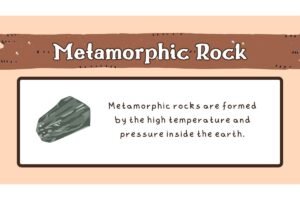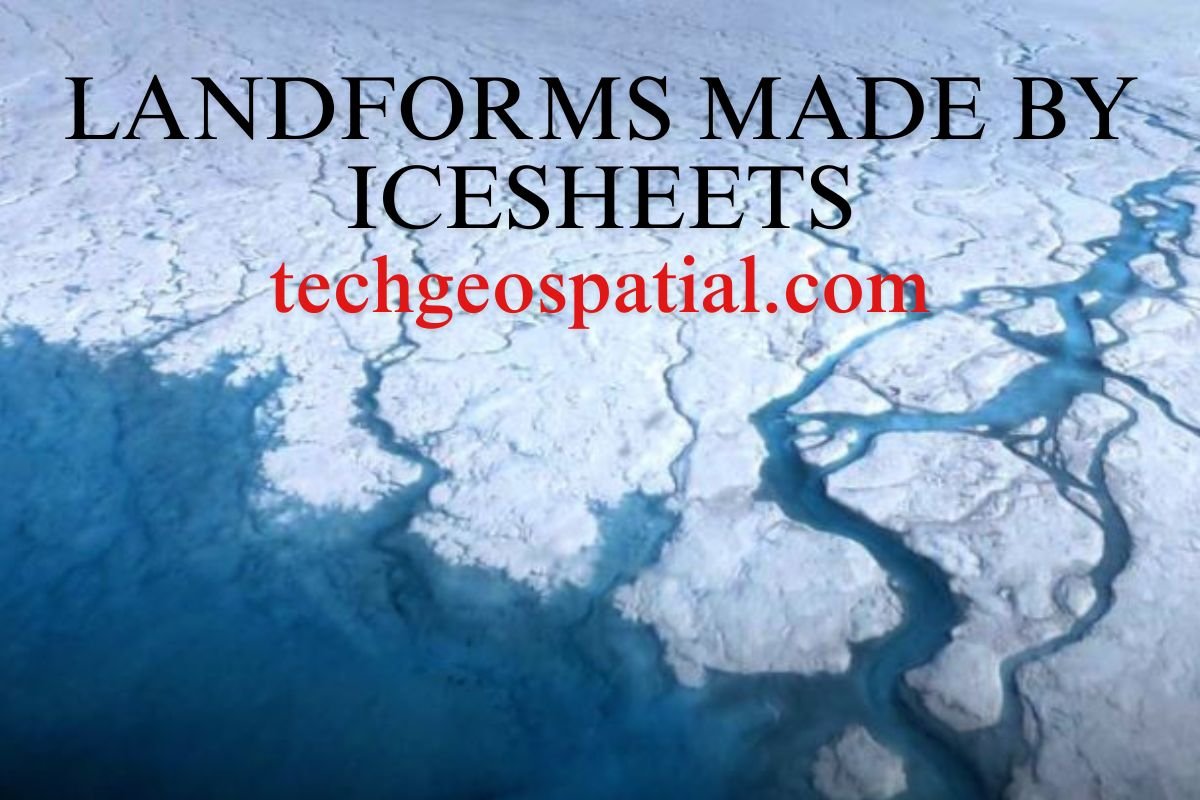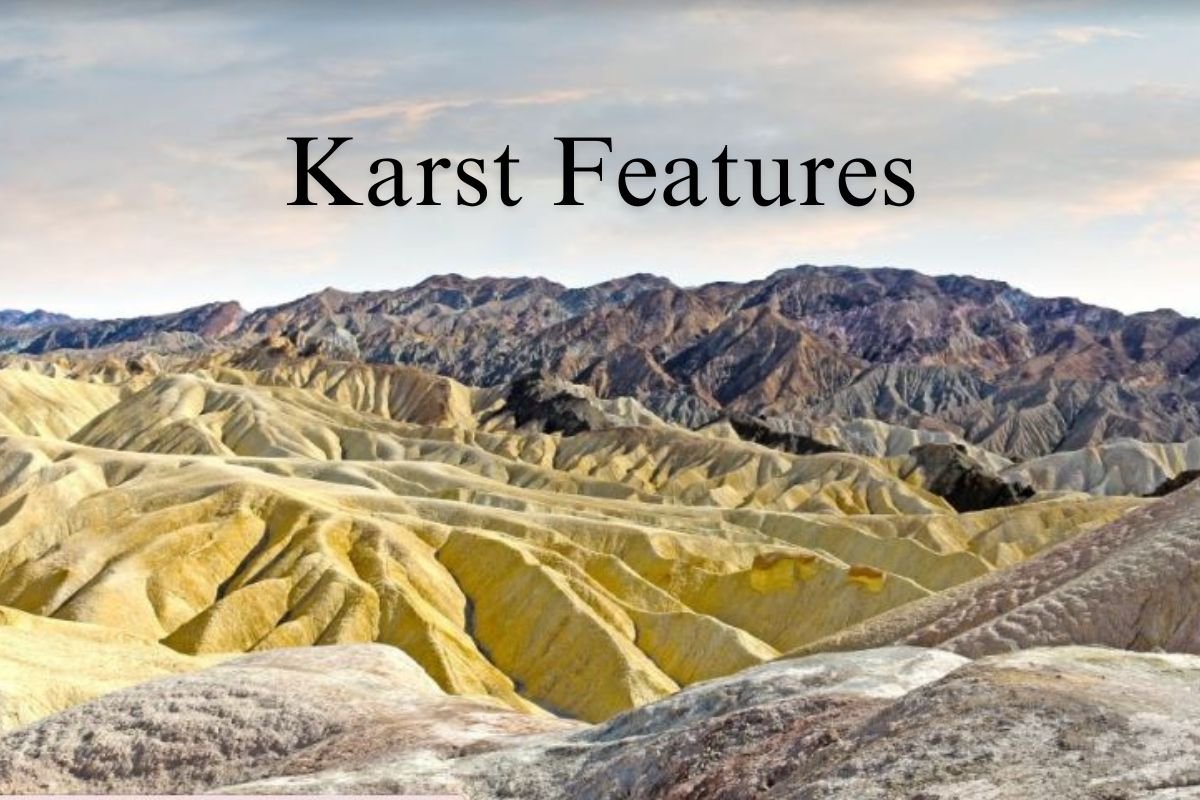Metamorphic Rocks
Metamorphic rocks, one of the three major types of rocks found on Earth’s surface, undergo a remarkable journey of transformation. In this article, we delve into the fascinating world of metamorphic rocks, exploring their formation, classification, common types, uses, and environmental significance.
Formation Process
Pressure and Temperature
Metamorphic rocks are formed deep beneath the Earth’s surface under high pressure and temperature conditions. These conditions cause existing rocks to undergo physical and chemical changes, leading to the formation of metamorphic rocks.
Types of Metamorphism

Types of metamorphism refer to the different processes by which rocks undergo transformation under high pressure and temperature conditions. There are primarily two main types of metamorphism: regional and contact metamorphism.
1. Regional Metamorphism:
This type of metamorphism occurs over large areas due to tectonic forces, such as the collision of continental plates or the subduction of one plate beneath another. The intense pressure and temperature conditions associated with these tectonic processes cause existing rocks to undergo profound changes. Regional metamorphism typically results in the formation of foliated metamorphic rocks, characterized by distinct layers or bands due to the alignment of mineral grains under pressure.
2. Contact Metamorphism:
Contact metamorphism occurs when rocks come into contact with molten magma or lava. The heat from the magma causes the surrounding rocks to undergo changes, resulting in the formation of metamorphic rocks. Unlike regional metamorphism, which occurs over large areas, contact metamorphism is localized around the igneous intrusion. This type of metamorphism often produces non-foliated metamorphic rocks, which lack the layered structure seen in foliated rocks.
Classification of Metamorphic Rocks
The classification of metamorphic rocks is based on their texture, mineral composition, and the processes by which they formed. Metamorphic rocks are broadly categorized into two main groups: foliated and non-foliated.
1. Foliated Metamorphic Rocks:
Foliated rocks exhibit a layered or banded structure due to the alignment of mineral grains under pressure. This alignment gives the rocks a distinct texture and allows them to split into thin sheets or layers. Foliated metamorphic rocks are further classified based on the degree of foliation and the types of minerals present. Common examples include:
-
- Slate: A fine-grained metamorphic rock derived from shale. It is characterized by its ability to split into thin sheets and is often used in roofing tiles and as a decorative material.
- Schist: A medium to coarse-grained metamorphic rock with a distinct foliation due to the alignment of minerals such as mica, quartz, and feldspar. Schist is commonly found in regions undergoing intense metamorphism and is used in construction and as a decorative stone.
- Gneiss: A coarse-grained metamorphic rock with alternating layers of light and dark minerals. Gneiss exhibits strong foliation and is often used in construction and landscaping due to its durability and aesthetic appeal.
2. Non-Foliated Metamorphic Rocks:
Non-foliated rocks lack a layered or banded structure and typically form from the recrystallization of minerals without significant pressure. These rocks often have a uniform texture and can be composed of a single mineral or a mixture of minerals. Common examples include:
-
- Marble: A metamorphosed limestone or dolomite composed primarily of calcite or dolomite crystals. Marble is prized for its beauty and is used in sculpture, architecture, and as a building material.
- Quartzite: A hard and durable metamorphic rock formed from sandstone. Quartzite is composed primarily of quartz grains fused together by pressure and heat. It is used in construction, as a raw material for glass and ceramics, and as a decorative stone.
Uses and Applications
Metamorphic rocks serve various practical and aesthetic purposes in both industry and everyday life.
Construction Industry
Metamorphic rocks like marble and quartzite are widely used in the construction industry for building facades, flooring, and countertops due to their durability and aesthetic appeal.
Decorative Purposes
The unique colors and patterns of metamorphic rocks make them popular choices for decorative purposes, including sculptures, ornamental stone, and landscaping.
Examples in Nature
Metamorphic rocks can be found in various natural settings, including mountain ranges, geological formations, and river valleys.
Mountain Ranges
Many of the world’s mountain ranges, such as the Appalachian Mountains and the Alps, consist primarily of metamorphic rocks formed through the process of regional metamorphism.
Geological Formations
Metamorphic rocks contribute to the formation of geological features such as cliffs, ridges, and valleys, shaping the Earth’s landscape over millions of years.
Comparison with Igneous and Sedimentary Rocks
While metamorphic rocks share some similarities with igneous and sedimentary rocks, they possess distinct characteristics and formation processes.
Differences in Formation
Unlike igneous rocks, which form from the cooling and solidification of molten magma, and sedimentary rocks, which form from the accumulation and compression of sediment, metamorphic rocks form through the alteration of existing rocks.
Physical Characteristics
Metamorphic rocks exhibit unique physical characteristics, including foliation, mineral alignment, and distinct grain patterns, distinguishing them from other rock types.
Distribution
Metamorphic rocks are distributed globally, with significant concentrations found in regions undergoing tectonic activity, such as mountain ranges, plate boundaries, and continental interiors.
Environmental Significance
Understanding the role of metamorphic rocks in geological processes and their significance in environmental indicators is crucial for studying Earth’s history and predicting future changes.
Geological Processes
Metamorphic rocks play a vital role in geological processes such as the rock cycle, tectonic plate movements, and the formation of mineral deposits, influencing the Earth’s surface and subsurface dynamics.
Climate Indicators
Certain types of metamorphic rocks, such as blueschist and eclogite, serve as indicators of past environmental conditions, providing valuable insights into climate change and geological events.
Conclusion
Metamorphic rocks are a testament to the dynamic processes shaping our planet’s geology. From the intense pressures deep beneath the Earth’s surface to the breathtaking landscapes they form, these rocks hold valuable clues to Earth’s history and future.
FAQs
- What are metamorphic rocks? Metamorphic rocks are rocks that have undergone a transformation due to high pressure, temperature, or chemical processes.
- How are metamorphic rocks classified? Metamorphic rocks are classified into foliated and non-foliated types based on their texture and mineral composition.
- What are some common uses of metamorphic rocks? Metamorphic rocks like marble and quartzite are used in construction, sculpture, and decorative applications.
- What is the difference between metamorphic and igneous rocks? Metamorphic rocks form from the alteration of existing rocks, while igneous rocks form from the cooling and solidification of molten magma.
- Where can metamorphic rocks be found? Metamorphic rocks are found worldwide, with significant concentrations in mountain ranges, plate boundaries, and regions undergoing tectonic activity.





